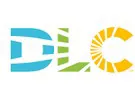The DesignLights Consortium (DLC) will begin accepting applications on March 31 from horticultural lighting manufacturers interested in qualifying their products under the DLC’s Horticultural Lighting Technical Requirements Version 3.0.
Finalized in December 2022, the V3.0 requirements increase the efficacy and establish additional minimum performance baselines for LED luminaires, lamps, and controls used by the controlled environment agriculture (CEA) industry. V3.0 also introduces a surveillance testing policy intended to protect the integrity and value of the DLC’s Horticultural Qualified Products List (QPL) for all stakeholders.
With the North American CEA industry projected to grow to $8 billion by 2026 and horticultural lighting one of the fastest growing segments of the electric load for many utilities, the DLC’s Horticultural Technical Requirements promote energy-efficient technology in CEA facilities, guiding the industry toward sustainable growth in concert with decarbonization efforts.
“The DLC is pleased to begin taking applications for the newest version of our horticultural QPL, supporting effective, energy-efficient horticultural lighting in the fast-growing CEA industry,” DLC Executive Director and CEO Christina Halfpenny said. “There has been a 17.5 percent increase in the efficacy of listed products since we introduced the DLC’s horticultural lighting program in 2018. We are proud to collaborate with cultivators and lighting manufacturers to continually advance sustainability in CEA.”
Provisions of the Horticultural Lighting Technical Requirements V3.0 include:
- Increasing (for the first time since the Horticultural Lighting Program launched) the Photosynthetic Photon Efficacy (PPE) threshold of QPL products – a 21 percent increase over the previous PPE threshold, setting a baseline for LED-based horticultural lighting that is 35 percent above the most efficacious non-LED option (1,000-watt double-ended high-pressure sodium luminaire);
- Introducing requirements for reporting product application information, including product dimensions and representative images to be published on the Hort QPL, giving efficiency programs and QPL users greater insight into a product’s intended use;
- Introducing product-level controllability requirements – including the dimming capability for certain AC-powered and all DC-powered luminaires and replacement lamps, and reporting of additional controllability details to enable more functionality and energy savings, promote interoperability and lay the groundwork for future demand-response efforts;
- Introducing a surveillance testing policy whereby the DLC will actively monitor the validity of data and other information it receives.
The updated policy provides indoor commercial growers with significant product variety and increased savings opportunities. A searchable, filterable online resource that offers users apples-to-apples comparisons of almost 1,200 horticultural LEDs, and the Horticultural QPL has grown more than 16-fold in the past two years. More than 50 North American energy efficiency programs require CEA operators to reference the DLC QPL to qualify for energy efficiency incentives (representing 91 percent of the DLC’s membership), and others have incorporated the DLC technical requirements into their programs. Two states with cannabis-specific energy efficiency regulations (Massachusetts and Illinois) offer a compliance pathway via the DLC’s Horticultural QPL.
The DLC will provide an overview of the Hort V3.0 product application process during a webinar on March 15 at 1 p.m. EDT.
For more information:
Design Lighting Consortium
www.designlights.org
